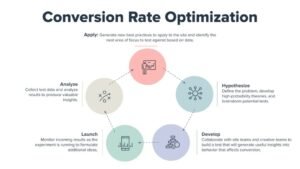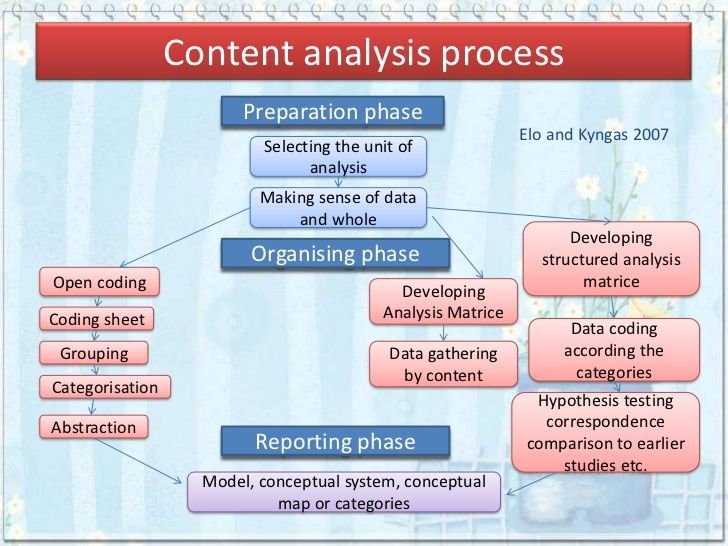Comprehensive Solution-Based Guide to Resolving Content Analyzer Issues:
A Content Analyzer is a tool or software designed to evaluate, optimize, and improve digital content by analyzing elements such as readability, SEO performance, sentiment, grammar, and audience engagement. When a Content Analyzer malfunctions or produces inaccurate results, it can disrupt content creation workflows, lead to poor content quality, and negatively impact business outcomes. This guide provides a detailed, solution-based approach to resolving Content Analyzer issues, breaking down the problem, identifying causes, and offering actionable steps to fix it. Real-world examples, prevention tips, and clear next steps ensure clients can address the issue effectively and prevent recurrence.
Breaking Down the Problem: Components of Content Analyzer Issues:
Content Analyzer issues can manifest in various ways, affecting different aspects of content production and optimization. The problem can be broken into the following components:
- Inaccurate Analysis Results:
- Issues: Incorrect readability scores, flawed SEO recommendations, or misidentified sentiment.
- Impact: Content may not resonate with the target audience or rank well on search engines.
- Software Performance Issues:
- Issues: Slow processing, crashes, or failure to load content for analysis.
- Impact: Delays in content production and reduced team productivity.
- Integration Failures:
- Issues: Inability to connect with CMS platforms (e.g., WordPress), APIs, or other tools.
- Impact: Disrupted workflows and manual workarounds that waste time.
- User Interface and Usability Problems:
- Issues: Confusing dashboards, unclear reporting, or difficulty navigating features.
- Impact: Reduced user adoption and inefficient use of the tool.
- Data Privacy and Security Concerns:
- Issues: Unauthorized data access or failure to comply with regulations like GDPR.
- Impact: Legal risks and loss of client trust.
Common Causes of Content Analyzer Issues:
Understanding the root causes of Content Analyzer problems is critical to devising effective solutions. Common causes include:

- Outdated Software or Plugins:
- Older versions may lack compatibility with new content formats or platforms, leading to inaccurate results or crashes.
- Improper Configuration:
- Incorrect settings (e.g., wrong target audience parameters or SEO rules) can skew analysis outputs.
- Insufficient Training or User Error:
- Users may misinterpret results or fail to use advanced features due to lack of training.
- Server or API Connectivity Issues:
- Network problems or API downtime can prevent the tool from accessing external data sources, such as search engine algorithms or databases.
- Resource Limitations:
- Insufficient processing power or memory on the user’s device can cause performance bottlenecks.
- Data Input Issues:
- Poorly formatted or low-quality content inputs (e.g., text with excessive errors) can confuse the analyzer.
Consequences of Not Addressing Content Analyzer Issues:
Failing to resolve Content Analyzer issues can have significant repercussions for businesses, including:
- Reduced Content Quality: Inaccurate analysis leads to poorly optimized content, harming engagement and conversions.
- Lower Search Engine Rankings: Flawed SEO recommendations can result in content that fails to rank, reducing organic traffic.
- Wasted Resources: Teams spend time on manual fixes or workarounds, increasing operational costs.
- Missed Business Opportunities: Delayed content production can cause missed deadlines for campaigns or launches.
- Reputation Damage: Consistently publishing subpar content can erode audience trust and brand credibility.
- Compliance Risks: Unaddressed data privacy issues may lead to regulatory fines or legal action.
Step-by-Step Instructions to Resolve Content Analyzer Issues:
Below is a structured, actionable plan to diagnose and resolve Content Analyzer issues using a systematic approach inspired by problem-solving frameworks like DMAIC (Define, Measure, Analyze, Improve, Control).
Step 1: Define the Problem;
- Action: Clearly articulate the issue with the Content Analyzer. Document specific symptoms, such as error messages, incorrect outputs, or performance lags.
- Tools/Resources: Use a problem statement template to structure your findings. For example: “The Content Analyzer provides inaccurate SEO scores, affecting content optimization for our blog, leading to a 10% drop in organic traffic.”
- Example: A marketing team notices their Content Analyzer flags all blog posts as “low readability” despite varied writing styles, indicating a potential configuration error.
Step 2: Measure the Impact;
- Action: Quantify the issue’s impact on your workflow or business outcomes. Collect data on metrics like content production delays, traffic declines, or error frequency.
- Tools/Resources:
- Google Analytics to track traffic changes.
- Project management tools like ClickUp to measure workflow delays.
- Example: The team measures a 15% decrease in blog post output due to manual content revisions caused by unreliable analyzer results.
Step 3: Analyze Root Causes;
- Action: Use root cause analysis techniques to identify why the issue is occurring. Common methods include:
- 5 Whys: Ask “Why?” five times to drill down to the core issue. For example:
- Why are SEO scores inaccurate? Because the tool uses outdated algorithms.
- Why are algorithms outdated? Because the software hasn’t been updated.
- Why hasn’t it been updated? Because auto-updates are disabled.
- Why are auto-updates disabled? Because the IT team wasn’t aware of the setting.
- Why wasn’t IT aware? Because there’s no regular maintenance schedule.
- Fishbone Diagram: Categorize causes under headings like Software, User, Data, or Environment.
- 5 Whys: Ask “Why?” five times to drill down to the core issue. For example:
- Tools/Resources:
- MindManager for creating Fishbone Diagrams.
- NVivo for analyzing qualitative data from user feedback.
- Example: The team discovers the Content Analyzer’s outdated SEO rules stem from a missed software update, confirmed via the 5 Whys.
Step 4: Implement Solutions;
- Action: Address the identified root causes with targeted solutions:
- Update Software: Install the latest version of the Content Analyzer to ensure compatibility and updated algorithms.
- Reconfigure Settings: Adjust parameters like target audience, keyword rules, or readability metrics to align with your goals.
- Train Users: Conduct training sessions to improve user proficiency with the tool’s features.
- Check Connectivity: Verify API and server connections, ensuring stable internet and updated API keys.
- Optimize Hardware: Upgrade device memory or processing power if performance issues persist.
- Clean Data Inputs: Pre-process content to remove formatting errors before analysis.
- Tools/Resources:
- Vendor documentation for update instructions (e.g., Yoast, Grammarly, or SEMrush support pages).
- Learning platforms like LinkedIn Learning for user training.
- Network diagnostic tools like PingPlotter to troubleshoot connectivity.
- Example: The team updates their Content Analyzer, reconfigures SEO settings for their niche, and trains staff using a vendor-provided webinar, resolving the readability issue.
Step 5: Monitor and Control:
- Action: Verify the solution’s effectiveness and establish controls to prevent recurrence:
- Test the Content Analyzer with sample content to confirm accurate outputs.
- Set up automated alerts for software updates or performance issues.
- Schedule regular user training and system maintenance.
- Document the new process in a Standard Operating Procedure (SOP).
- Tools/Resources:
- ClickUp for SOP documentation and task automation.
- Monitoring tools like New Relic for real-time software performance tracking.
- Example: The team confirms improved SEO scores and schedules monthly software checks, reducing future issues.
Real-World Case Study: Resolving Content Analyzer Issues:
Scenario: A mid-sized e-commerce company used a Content Analyzer to optimize product descriptions for SEO and readability. However, the tool consistently flagged descriptions as “non-compliant” with SEO best practices, despite following recommendations. This led to a 20% drop in product page traffic over three months.
Solution Process:
- Define: The team documented the issue: “The Content Analyzer incorrectly flags product descriptions as SEO non-compliant, reducing traffic.”
- Measure: Using Google Analytics, they confirmed a 20% traffic decline and noted a 30% increase in content revision time.
- Analyze: A Fishbone Diagram revealed the cause: the analyzer’s SEO rules were based on outdated Google algorithms due to a missed software update.
- Improve: The team updated the software, reconfigured SEO settings for e-commerce keywords, and trained staff on new features via a vendor webinar.
- Control: They implemented automated update alerts and created an SOP for monthly maintenance.
Results: Within one month, SEO scores improved, traffic increased by 15%, and content revision time dropped by 25%. The company standardized the process across teams, ensuring consistent content quality.
Source Inspiration: This case study draws on problem-solving principles from ClickUp’s case study framework, emphasizing structured workflows.
Prevention Tips to Avoid Future Content Analyzer Issues:
To minimize the likelihood of recurring problems, implement these proactive strategies:
- Schedule Regular Updates:
- Enable auto-updates or check for new software versions monthly to stay current with algorithms and features.
- Invest in User Training:
- Provide ongoing training to ensure users understand advanced features and interpret results correctly.
- Perform Routine Maintenance:
- Conduct quarterly system checks to verify connectivity, settings, and performance.
- Validate Data Inputs:
- Use pre-analysis tools like Grammarly or Hemingway to clean content before feeding it into the analyzer.
- Monitor Industry Trends:
- Stay informed about changes in SEO algorithms or content standards via resources like Moz or Search Engine Journal.
- Secure Data Handling:
- Ensure the Content Analyzer complies with data privacy laws by reviewing vendor security certifications.
- Leverage Support Channels:
- Establish a direct line to the vendor’s support team for quick resolution of technical issues.
Next Steps and Call to Action:
To resolve Content Analyzer issues and restore optimal performance, take immediate action:
- Assess Your Situation: Document the specific issues you’re facing with your Content Analyzer, noting symptoms and impacts.
- Follow the Steps: Begin with the 5-step process outlined above, starting with defining the problem and measuring its impact.
- Engage Your Team: Involve IT, marketing, and content teams to ensure a collaborative approach to root cause analysis and solution implementation.
- Utilize Resources: Access tools like MindManager, ClickUp, or vendor support to streamline the process.
- Schedule a Review: Set a date one month from now to evaluate the solution’s effectiveness and adjust as needed.
Call to Action: Don’t let Content Analyzer issues derail your content strategy. Start diagnosing the problem today using this guide, and reach out to your software vendor or a professional consultant for support if needed. Act now to restore content quality, boost efficiency, and protect your business’s bottom line!

1 thought on “Comprehensive Solution-Based Guide to Resolving Content Analyzer Issues”